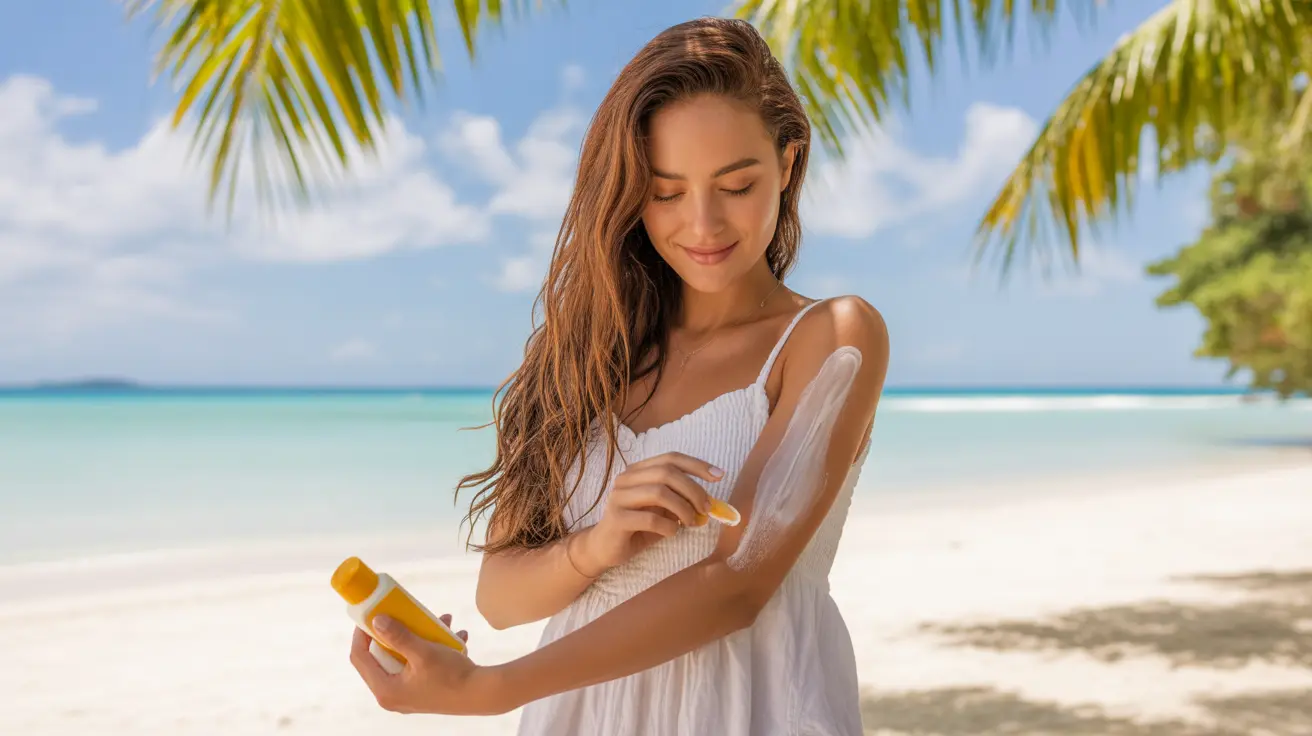Many people wonder if wearing sunscreen completely prevents tanning or if they can still achieve a sun-kissed glow while protecting their skin. Understanding how sunscreen works and its relationship with tanning is crucial for maintaining healthy skin while enjoying outdoor activities.
Let's explore the science behind sunscreen, tanning, and how various factors affect your skin's response to sun exposure, helping you make informed decisions about sun protection.
How Sunscreen Works with Your Skin
Sunscreen creates a protective barrier on your skin that filters out harmful UV radiation. However, no sunscreen blocks 100% of UV rays, which means some UV radiation still reaches your skin, potentially causing tanning and skin damage.
The effectiveness of sunscreen depends on several factors, including the SPF level, application technique, and how frequently you reapply. Even with proper sunscreen use, some UV rays will penetrate your skin, triggering melanin production – the process responsible for tanning.
Understanding SPF and UV Protection
SPF (Sun Protection Factor) indicates how much longer it takes for UV rays to redden protected skin compared to unprotected skin. For example, SPF 30 theoretically allows you to stay in the sun 30 times longer without burning than you could without protection.
Different Types of UV Rays
Sunscreen protects against two types of UV radiation:
- UVA rays: Penetrate deeply into the skin, causing premature aging and contributing to skin cancer
- UVB rays: Primarily responsible for sunburns and tanning
Broad-spectrum sunscreens protect against both types, but some UV radiation still reaches your skin, which is why tanning remains possible.
Choosing the Right Sunscreen for Maximum Protection
To minimize tanning and protect your skin effectively, select a sunscreen with these characteristics:
- Broad-spectrum protection
- SPF 30 or higher
- Water-resistant formula
- Physical or chemical filters appropriate for your skin type
Physical sunscreens containing zinc oxide or titanium dioxide typically provide better protection against tanning compared to chemical alternatives.
The Truth About "Safe" Tanning
The concept of a "safe tan" is largely a myth. Any change in skin color indicates damage to skin cells, as your body produces melanin in response to UV exposure. While sunscreen significantly reduces this damage, it cannot eliminate it entirely.
The safest approach to achieving a tanned appearance is using self-tanning products or bronzers rather than relying on sun exposure.
Proper Sunscreen Application and Timing
To maximize protection and minimize tanning:
- Apply sunscreen 15-30 minutes before sun exposure
- Use approximately 1 ounce (30ml) for full-body coverage
- Reapply every 2 hours or after swimming/sweating
- Pay special attention to commonly missed areas like ears and feet
Frequently Asked Questions
Can you still get a tan while wearing sunscreen?
Yes, you can still tan while wearing sunscreen because no sunscreen blocks 100% of UV rays. However, the tan will develop more slowly and with less skin damage compared to unprotected sun exposure.
How does SPF affect the likelihood of tanning and sunburn?
Higher SPF numbers provide greater protection against UV rays, reducing both tanning and burning. SPF 30 blocks about 97% of UVB rays, while SPF 50 blocks about 98%. This means tanning will occur more slowly with higher SPF products.
What types of sunscreen provide the best protection against tanning and skin damage?
Broad-spectrum sunscreens with physical blockers like zinc oxide and titanium dioxide typically provide the best protection against both tanning and skin damage. These ingredients create a physical barrier that reflects UV rays away from the skin.
Is there such a thing as a safe or healthy tan when using sunscreen?
No, there is no such thing as a completely safe or healthy tan. Any color change in your skin indicates DNA damage from UV exposure. While sunscreen reduces this damage, it cannot eliminate it entirely.
How often should I reapply sunscreen to reduce tanning and protect my skin?
Reapply sunscreen every 2 hours during sun exposure, or more frequently if swimming, sweating, or toweling off. Consistent reapplication is crucial for maintaining protection against both tanning and skin damage.




